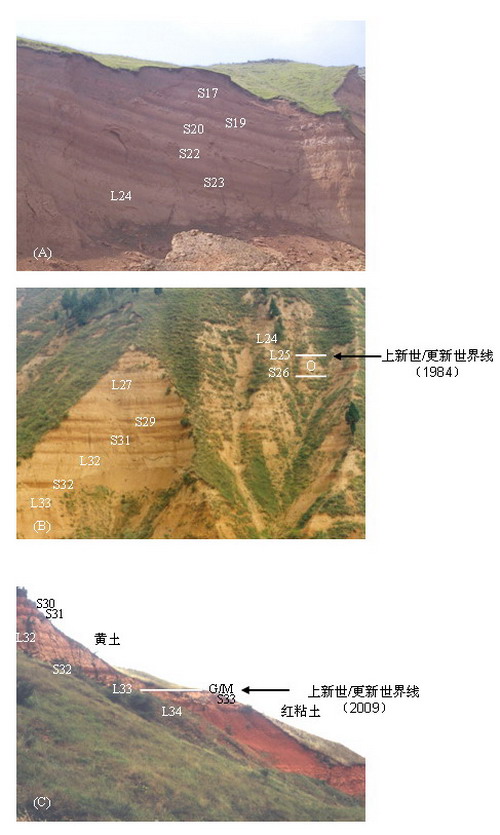|
Sedimentology and Structural Geology
|
Highlight 2010-002
The term ‘Quaternary’ has been in use for over two hundred years and has wide currency within the Earth Sciences. However, there has been a long-running debate over both the status of the Quaternary as a formal chronostratigraphical unit and its base (1.8 Ma versus 2.6 Ma). In 2004, the term ‘Quaternary’ was even abandoned by some scientific authorities and organizations, leading to a vigorous international debate. In 2009, a proposal for establishing Quaternary as a formal international Period/System with its base at 2.6 Ma was formally ratified by the International Union of Geological Sciences. In complete Chinese loess sequences, 33 soil-loess couplets have been identified and labeled with Si-Li system. Traditionally, the base of Chinese loess has been designated at the bottom of loess unit L33, and the onset of extensive loess deposition has been regarded to mark the beginning of the Pleistocene. Based on litho- and pedo-stratigraphic characteristics of four ‘red clay’-loess sequences from northern China, Shiling Yang and Zhongli Ding reassess the drastic climatic event recorded in the quasi-continuous eolian deposits, and address the position of the Pliocene-Pleistocene boundary. They identify a typical loess layer within the uppermost ‘red clay’ and formally designate it as L34, thus lowering the basal age of Chinese loess from 2.6 Ma to ~2.8 Ma, some 200 ka earlier than previously thought. At ~2.8 Ma, shortly before the Gauss/Matuyama boundary, the eolian sequences show a sedimentary transition from the well-weathered ‘red clay’ to the alternating loess and paleosol deposits, accompanied by coarser particle size, and increased dust accumulation rates. These indicate a large climatic shift from long-lasting warm-humid conditions to large-amplitude cold-dry and warm-humid fluctuations around 2.8 Ma, and a dramatic increase in aridity over the dust source region. In contrast, such a drastic event is not identified around the top of the Olduvai event or at any other time of the past 7.7 Ma. In this regard, the base of the Quaternary may be placed at 2.8 Ma rather than 1.8 Ma. As the Gauss/Matuyama boundary offers a sound foundation for global time correlation and chronostratigraphic classification, these results still support the proposal to retain the term ‘Quaternary’ and assign it a formal rank in the Geologic Time Scale with its base at 2.6 Ma. This study was published in Quaternary International (Yang and Ding. Drastic climatic shift at ~2.8 Ma as recorded in eolian deposits of China and its implications for redefining the Pliocene-Pleistocene boundary. Quaternary International, 2010, 219: 37-44).
Figure 1: Photographs showing the eolian deposits from the Chinese Loess Plateau.
|
Head of Group

Prof. Li ZhongDivision of Lithosphere Evolution Tel: 86 010 82998537 Email: lizhong@mail.iggcas.ac.cn |
-
SIMSSecondary Ion Mass Spectrometer Laboratory
-
MC-ICPMSMultiple-collector ICPMS Laboratory
-
EM & TEMElectron Microprobe and Transmission Electron Microscope Laboratory
-
SISolid Isotope Laboratory
-
StIStable Isotope Laboratory
-
RMPARock-Mineral Preparation and Analysis
-
AAH40Ar/39Ar & (U-Th)/He Laboratory
-
EMLElectron Microscopy Laboratory
-
USCLUranium Series Chronology Laboratory
-
SASeismic Array Laboratory
-
SEELaboratory of Space Environment Exploration Laboratory
-
PGPaleomagnetism and Geochronology Laboratory
-
BioMNSFrance-China Bio-mineralization and Nano-structure Laboratory


